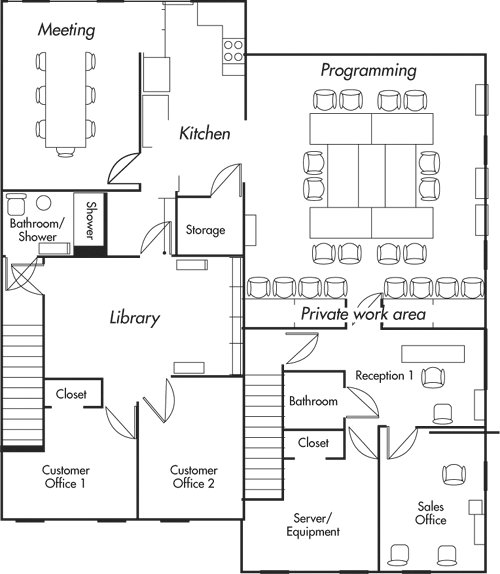A Sample Office Layout Revisited
| I decided to save some page space on Figure 3-13 (Chapter 3) by showing only the programming room in Ken Auer's building. Ken correctly took me to task for showing only that one room. My mistake showed up as I gave talks on the idea of convection currents of information. Having more space available in the talk slides, I showed the entire office plan (Figure 3.1-1). During those talks, I found myself discussing the uses of the private work area, the kitchen, the library, and the meeting room, and I noticed that they each contributed a separate value:
Figure 3.1-1. Completed office layout (Courtesy of Ken Auer, RoleModel Software). What I find interesting is how people declare their mental state as they move between zones. When they walk out of the programming zone, they are declaring, "I need a break (for some reason)." When they walk into the kitchen, they indicate their availability for social chit-chat. When they walk into the library, they indicate their need for quiet. And when they walk back into the programming zone, they indicate that they are back in full force and ready to make headway. Delighted with my findings, I told all this to Ken. He replied, "Of course. You mean you didn't include the full floor plan in your book? Why would you show just the programming area?" ArghI missed so much! |
EAN: 2147483647
Pages: 126
